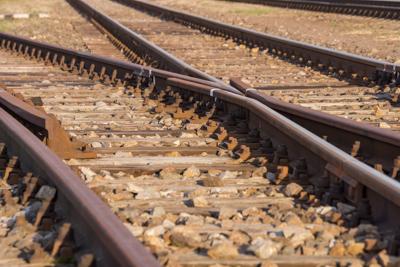Some residents are not onboard with commuter rail.
On June 22, citizens gathered at the Heritage Academy Gateway to hear arguments against a commuter rail for the area.
Gilbert Vice Mayor Aimee Yentes hosted the event and Queen Creek Councilwoman Leah Martineau spoke out on the issue.
Martineau said no items regarding commuter rail will appear on upcoming Queen Creek Town Council agendas, but Yentes said now is the time for concerned citizens to act.
“It’s not even being talked about, but with it is being talked about in Gilbert, we know that Queen Creek will be next,” Martineau said.
Yentes outlined six major reasons that goes against the commuter rail development: increased crime, increased taxes, requires massive subsidies, outdated technology and falling ridership.
“We’re convinced this is a really terrible idea for our community,” Yentes said.
Martineau was appointed to the Valley Metro Regional Public Transportation Authority Board of Directors at the beginning of the year.
“We’re spending our money on lobbyists that are therefore going to the state capitol and trying to get more of our tax dollars to go towards more of these types of things,” she said.
The RPTA Board has 19 members comprising elected officials appointed by their own mayor, councils and the county board of supervisors.
Along with them, the Valley Metro Rail Board of Directors has four members who are elected officials that help guide the agency by providing transportation leadership to best serve the region and their communities, according to their website.
In 2018, Maricopa Association of Governments released the Regional Commuter Rail System Study Update, which revised the results of the original study conducted in 2010. The updated study became a point of contention at a Gilbert Town Council meeting because it was considering a motion to pay toward further study. That motion was tabled.
Commuter rail service differs from light rail service, which focuses on shorter corridors and more frequent service throughout the day, according to the study.
Commuter rail corridors are longer than LRT lines, which traditionally are fewer than 20 miles in length, according to the study.
The study said commuter rail could share existing freight rail tracks in each corridor with a second track being constructed within the central portions of the system to accommodate both freight and passenger trains.
The 2018 study proposed the possibility of a 61.4-mile “Estrella/San Tan Line” commuter rail route connecting Buckeye to Florence with 16 stops. Travel time along the entire route estimates one hour and 18 minutes.
There are also plans for a 53.8-mile “Grand/ Kyrene Line” from Wickenburg to Wild Horse Pass/I-10 with 14 stops. Travel time along the entire route estimates one hour and nine minutes.
The study estimates that the Estrella/San Tan Line would have more than 10,000 daily passengers by 2040, with only 240 coming from Queen Creek.
The study looked at two possible models of locomotives: Locomotive Hauled Coaches (LHC) and Diesel Multiple Unit (DMU).
For example, the San Diego Coaster that connects downtown San Diego to Oceanside, California, utilizes an LHU. The Sonoma–Marin Area Rail Transit (SMART) that connects Santa Rosa to downtown San Rafael, California utilizes a DMU.
Capital costs for both line corridors, System Elements including Union Station and Commuter Rail Maintenance Facility, and 15 train sets were approximately $2.5 billion.
The light rail currently connecting Phoenix to Mesa has approximately 28 miles of track that has cost $2.1 billion to construct with average weekday ridership of 48,000, according to Valley Metro.


